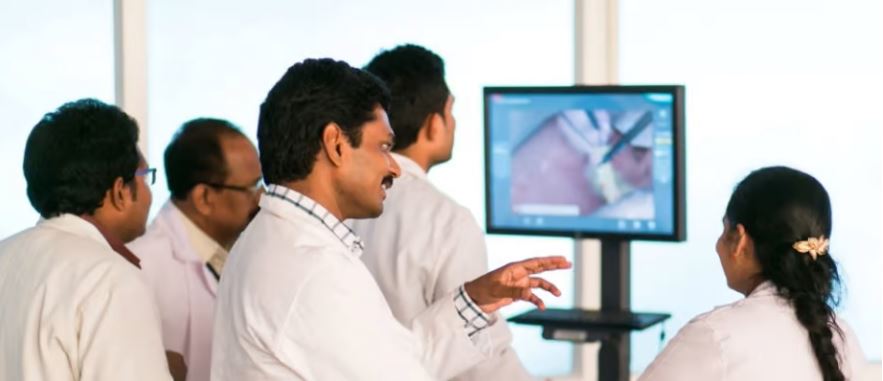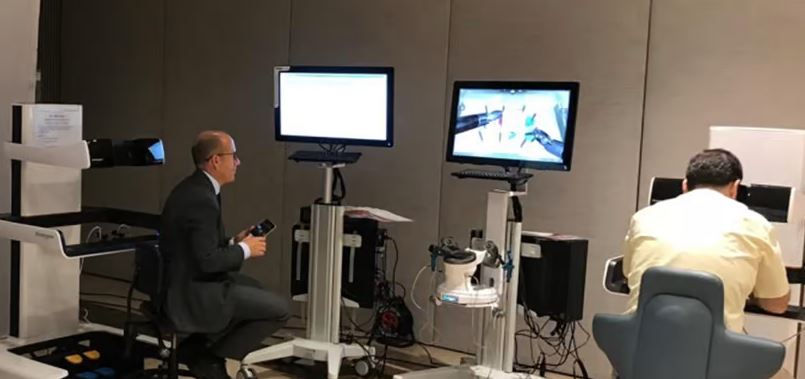下载PDF
Park Hill School District Deploys Shopping to Empower Users through Selfservice
技术
- 功能应用 - 企业资源规划系统 (ERP)
- 功能应用 - 远程监控系统
适用行业
- 教育
适用功能
- 商业运营
- 设施管理
用例
- 远程控制
- 远程资产管理
服务
- 系统集成
- 软件设计与工程服务
挑战
Park Hill School District faced a challenge in managing user requests for new software. The existing process was slow, manual, and resource-intensive, requiring users to raise help desk tickets and wait several days for software installation. This inefficiency led to IT being perceived as inflexible, as it couldn't offer users the choice and flexibility they desired. The district needed a solution that integrated with their existing Systems Center Configuration Manager (ConfigMgr) and Active Directory, providing a user-friendly interface for on-demand self-service software installation.
关于客户
Park Hill School District, located in the Northland area of Kansas City, Missouri, serves over 10,500 students across nine elementary schools, three middle schools, and two high schools. The district is committed to providing a meaningful education in a safe and caring environment, preparing each student for success in life. With a motivated staff of 1,500 members, Park Hill School District aims to empower its users through innovative IT solutions, enhancing the educational experience for both students and faculty.
解决方案
To address the challenge, Park Hill School District deployed Shopping from 1E across its centralized network of sites. This solution empowered 1,500 staff and faculty members to search for, find, and download software on-demand, bypassing the need for manual help desk intervention. The deployment was completed in just one day, making over 300 applications available for download. Shopping's user-friendly interface, similar to Amazon or iTunes, allowed users to quickly master the solution. The self-service automation of the request, approval, and delivery process enabled users to download software and services within minutes, significantly reducing the number of help desk requests.
运营影响
数量效益
相关案例.

Case Study
IoT platform Enables Safety Solutions for U.S. School Districts
Designed to alert drivers when schoolchildren are present, especially in low-visibility conditions, school-zone flasher signals are typically updated manually at each school. The switching is based on the school calendar and manually changed when an unexpected early dismissal occurs, as in the case of a weather-event altering the normal schedule. The process to reprogram the flashers requires a significant effort by school district personnel to implement due to the large number of warning flashers installed across an entire school district.

Case Study
Revolutionizing Medical Training in India: GSL Smart Lab and the LAP Mentor
The GSL SMART Lab, a collective effort of the GSL College of Medicine and the GSL College of Nursing and Health Science, was facing a challenge in providing superior training to healthcare professionals. As clinical medicine was becoming more focused on patient safety and quality of care, the need for medical simulation to bridge the educational gap between the classroom and the clinical environment was becoming increasingly apparent. Dr. Sandeep Ganni, the director of the GSL SMART Lab, envisioned a world-class surgical and medical training center where physicians and healthcare professionals could learn skills through simulation training. He was looking for different simulators for different specialties to provide both basic and advanced simulation training. For laparoscopic surgery, he was interested in a high fidelity simulator that could provide basic surgical and suturing skills training for international accreditation as well as specific hands-on training in complex laparoscopic procedures for practicing physicians in India.

Case Study
Implementing Robotic Surgery Training Simulator for Enhanced Surgical Proficiency
Fundacio Puigvert, a leading European medical center specializing in Urology, Nephrology, and Andrology, faced a significant challenge in training its surgical residents. The institution recognized the need for a more standardized and comprehensive training curriculum, particularly in the area of robotic surgery. The challenge was underscored by two independent studies showing that less than 5% of residents in Italian and German residency programs could perform major or complex procedures by the end of their residency. The institution sought to establish a virtual reality simulation lab that would include endourological, laparoscopic, and robotic platforms. However, they needed a simulator that could replicate both the hardware and software of the robotic Da Vinci console used in the operating room, without being connected to the actual physical console. They also required a system that could provide both basic and advanced simulation training, and a metrics system to assess the proficiency of the trainees before they performed surgical procedures in the operating theater.

Case Study
Edinburgh Napier University streamlines long-distance learning with Cisco WebEX
• Geographically dispersed campus made in-person meetings costly and inconvenient.• Distance-learning programs in Malaysia, India, and China required dependable, user-friendly online tools to maximize interaction in collaborative workspaces.• Virtual learning environment required a separate sign-in process, resulting in a significant administrative burden for IT staff and limited adoption of collaboration technology.

Case Study
8x increased productivity with VKS
Before VKS, a teacher would spend a lot of time showing a group of 22 students how to build a set of stairs within a semester of 120 hours. Along with not leaving the teacher much time to provide one-on-one support for each student to properly learn carpentry, it also left a considerable amount of room for error. Key information would be misinterpreted or lost as the class was taught in the typical show-and-tell way.

Case Study
Scalable IoT Empowering GreenFlex's Sustainable Growth
GreenFlex, a company that supports sustainable development, decarbonization, and energy efficiency, faced several challenges in its quest to expand its business. The company needed to deploy a robust and sustainable IoT technology to support its growth. It was crucial for them to monitor and control devices at customer sites in a safe and reliable manner. They also needed to integrate devices across a range of communication protocols and gather and act on data to meet efficiency targets. GreenFlex had previously built IoT capabilities into its digital platform, GreenFlexIQ, to monitor and manage customer sites remotely. However, they soon realized that they needed a new platform to support their ambitions. They needed a platform that could scale to connect more devices for production management and make it easier for the operations team to manage devices in the field.




